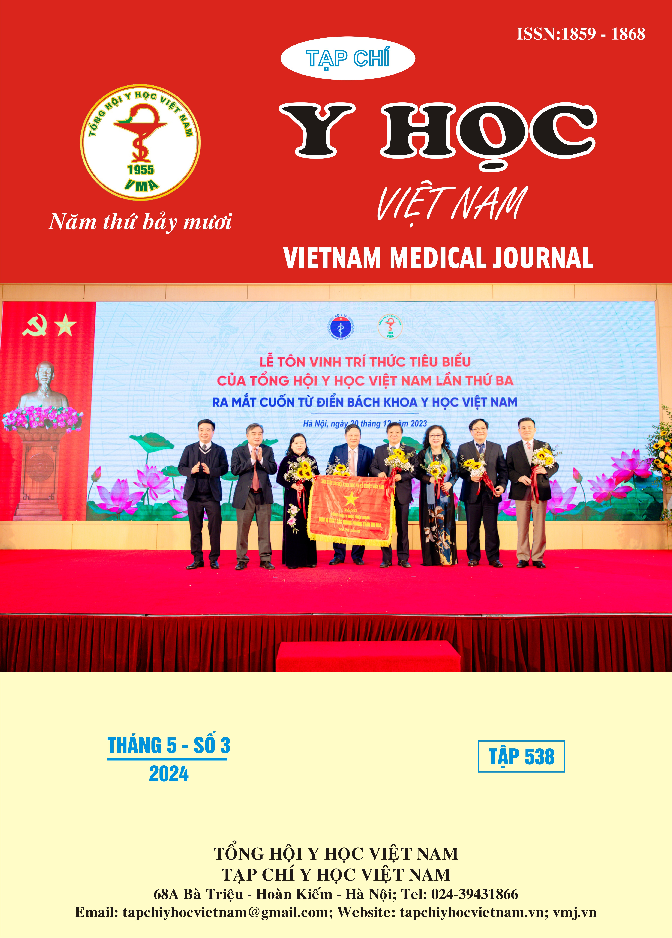SỬ DỤNG PHƯƠNG PHÁP ĐO QUANG ĐỂ XÁC ĐỊNH GIÁ TRỊ ẤN ĐỊNH CỦA MẪU SINH PHẨM HUYẾT HỌC TRONG KIỂM TRA CHẤT LƯỢNG XÉT NGHIỆM HUYẾT HỌC
Nội dung chính của bài viết
Tóm tắt
Nghiên cứu độ ổn định số lượng tế bào máu (hồng cầu người, bạch cầu, tiểu cầu giả lập) trong kiểm tra chất lượng xét nghiệm huyết học là rất cần thiết cho các phòng xét nghiệm huyết học tại Việt Nam. Trong nghiên cứu này, nhóm nghiên cứu xác định giá trị ấn định số lượng tế bào máu bằng phương pháp đo quang. Mẫu tổ hợp tế bào máu ở 3 mức nồng độ (cao, bình thường, thấp) bằng công thức tối ưu hóa môi trường bảo quản ở từng mức nồng độ. Xác định giá trị ấn định (trung bình ± 2SD) của dòng máy phân tích huyết học bằng phương pháp đo quang trên máy Celldyn 3200, Celldyn Ruby, mẫu sẽ được gửi tới 10 phòng xét nghiệm khác nhau sử dụng dòng máy Celldyn 3200, Celldyn Ruby để đánh giá. Kết quả nghiên cứu đã xác định giá trị ấn định của dòng máy Celldyn 3200, Celldyn Ruby ở 3 mức nồng độ: dòng máy Celldyn 3200 có 80%, Celldyn Ruby có 90% phòng xét nghiệm có kết quả phân tích nằm trong giá trị ấn định. Kết quả đo số lượng hồng cầu, bạch cầu giả lập và tiểu cầu giả lập trên từng thiết bị phân tích giữa 10 phòng xét nghiệm là tương đương nhau, cùng một mức nồng độ thì dòng máy Celldyn 3200, Celldyn Ruby sẽ cho kết quả bạch cầu giả lập và hồng cầu tương đương nhau, chỉ có chỉ số tiểu cầu giả lập là khác nhau và sự khác biệt này có ý nghĩa thống kê (p < 0,05). Như vậy, mẫu sinh phẩm huyết học đạt tiêu chuẩn để có thể được sử dụng để đánh giá kết quả của các phòng xét nghiệm có sử dụng dòng máy đo quang là: Celldyn 3200, Celldyn Ruby.
Chi tiết bài viết
Từ khóa
ngoại kiểm tra, nội kiểm tra, mẫu kiểm chuẩn huyết học, hồng cầu người, bạch cầu giả lập, tiểu cầu giả lập.
Tài liệu tham khảo
2. Sciacovelli, L.; Secchiero, S.; Zardo, L.; Zaninotto, M.; Plebani, M. External quality assessment: an effective tool for clinical governance in laboratory medicine. Clin. Chem. Lab. Med. 2006, 44, 740-749.
3. Sciacovelli, L.; Secchiero, S.; Zardo, L.; Plebani, M. The role of the external quality assessment. Biochem. Med. 2010, 20, 160-164.
4. Vo, N.N.; Tran, H.T.; Truong, Q.T.; Nguyen, T.H. Optimization of Storage Medium for Hematological Reference Samples in External Quality Assessment. Appl. Sci. 2021, 11, 8777. https://doi.org/ 10.3390/app11188777.
5. Miller, W.G., Specimen materials, target values and commutability for external quality assessment (proficiency testing) schemes. Clinica Chimica Acta, 2003. 327(1): p. 25-37.
6. Westgard J.O. Basic QC practies, 4th ed.; Westgard QC Inc., USA, 2016.


